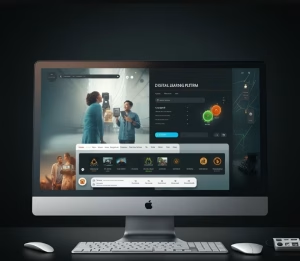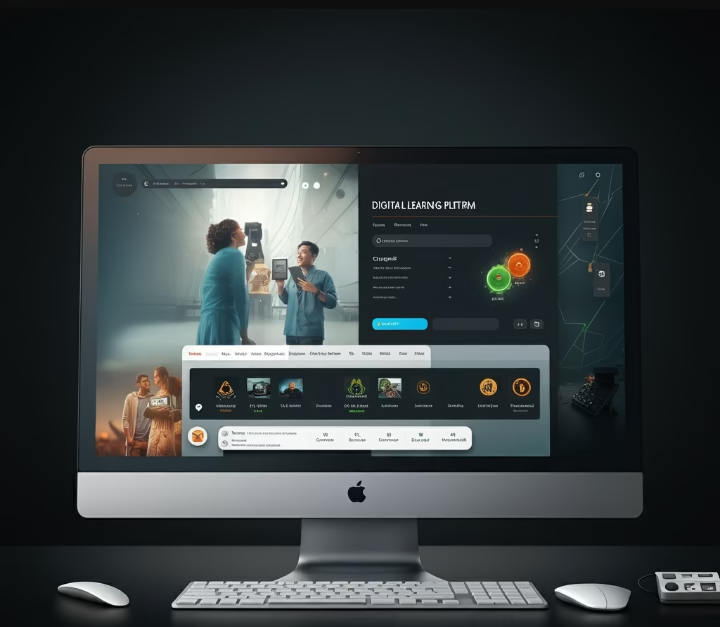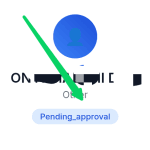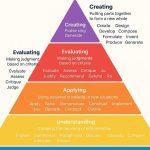
How to Choose the Right Digital Learning Platform
Digital learning platforms have become the backbone of modern education and training. From schools and universities to businesses and individuals, these platforms make learning accessible, engaging, and flexible. Whether you are a teacher designing virtual lessons, a business leader training employees, or a student building skills for the future, the right platform can make all the difference.
But with countless options available today—ranging from free classroom tools to advanced enterprise solutions—the big question remains: how do you choose the right digital learning platform for your needs?
This guide explores everything you need to know: what digital learning platforms are, the features that matter most, how to compare options, and the most trusted platforms in the market today.

What Is a Digital Learning Platform?
A digital learning platform is an online software or tool that supports teaching and learning by delivering content, managing activities, and tracking progress. These platforms may be web-based or mobile-friendly, allowing learners and educators to interact anytime, anywhere.
Key uses include:
- For schools: managing classes, assignments, and student performance.
- For businesses: training staff, tracking employee growth, and ensuring compliance.
- For individuals: personal development through self-paced courses.
According to UNESCO, digital learning tools play a vital role in bridging education gaps worldwide, especially in remote and underserved communities.
Key Factors to Consider When Choosing a Digital Learning Platform
1. Define Your Goals and Needs
Start by clarifying your purpose:
- For schools: look for tools like quizzes, student dashboards, and collaborative features.
- For businesses: prioritize scalability, analytics, and integration with HR tools.
- For personal learning: platforms with wide course libraries (e.g., Udemy, Coursera) are ideal.
Clear goals prevent you from overpaying for features you may not need.
2. User Experience and Interface Design
A platform must be easy to navigate. Complicated interfaces often discourage learners.
Look for:
- User-friendly design: A clean, intuitive dashboard.
- Mobile compatibility: Essential since Statista reports over 6.9 billion smartphone users globally in 2025.
Smooth design ensures better adoption and engagement.
3. Content Availability and Integration
Not all platforms provide the same kind of content. Ensure your choice supports:
- Interactive learning: videos, quizzes, and simulations.
- Tool integration: such as Google Classroom, Zoom, Microsoft Teams, or Slack.
For example:
- Moodle and Canvas: support a variety of content types.
- Kahoot and Edmodo: ideal for interactive activities.
Essential Features of a Good Digital Learning Platform
Customization and Flexibility
The best platforms allow you to tailor content. For instance:
- Teachers can adjust lessons for different grade levels.
- Businesses can create department-specific training modules.
This flexibility ensures content relevance and learner engagement.
Interactive Tools and Engagement Options
Engagement determines success in digital learning. A report by Harvard Business Review notes that interactive learning methods improve retention by up to 60%.
Look for features such as:
- Gamification: badges, leaderboards, points.
- Discussion forums: peer-to-peer interaction.
- Live sessions: to simulate classroom experiences.
Scalability and Future-Readiness
Your chosen platform should grow with you. Consider:
- Ability to handle more users as your needs expand.
- Support for emerging tech like AI-based learning recommendations or VR simulations.
Future-ready platforms protect your long-term investment.

Evaluating Costs and ROI of Digital Learning Platforms
Compare Subscription Models
Platforms often provide tiered pricing:
- Free versions: Basic features for individuals and small groups. Example: Google Classroom.
- Premium subscriptions: Advanced tools, analytics, and customer support. Example: Docebo, SAP Litmos.
Value for Money and Long-Term Benefits
Instead of focusing only on upfront costs, consider ROI:
- Schools save on paper-based teaching materials.
- Businesses reduce employee training costs and boost productivity.
Investing in a premium platform often leads to long-term gains.
Security, Privacy, and Technical Support
Data Security and Privacy
With sensitive student and employee data at stake, prioritize platforms with:
- Data encryption.
- Compliance with GDPR, COPPA, or FERPA.
For example, Moodle and Blackboard strictly follow international compliance guidelines.
Reliable Technical Support
Even the best platform has glitches. Ensure your choice offers:
- 24/7 support (via email, chat, or phone).
- Regular updates to fix bugs and improve features.
Popular Digital Learning Platforms to Consider
Learning Management Systems (LMS)
LMS platforms are the backbone of institutional learning. Popular choices include:
- Moodle – Open-source and customizable.
- Blackboard – Powerful analytics and robust support.
- Canvas – Sleek design and user-friendly.
Specialized Platforms
Some platforms target specific audiences:
- Schools: Google Classroom, Edmodo.
- Corporate training: Docebo, SAP Litmos.
- Self-paced learning: Coursera, Udemy, Khan Academy.
Conclusion
Choosing the right digital learning platform requires balancing goals, features, cost, and scalability. A strong platform should be:
- User-friendly and mobile-ready.
- Secure and compliant with data regulations.
- Flexible enough to adapt to future needs.
By testing and comparing options, you’ll find a platform that not only fits your budget but also enhances learning outcomes and long-term growth.
FAQs on Digital Learning Platforms
Q: What is the best digital learning platform for schools?
A: Google Classroom and Moodle are widely recommended for schools. Google Classroom is free, simple, and integrates well with Google Workspace tools, while Moodle offers advanced customization and scalability.
Q: How can I evaluate the security of a digital learning platform?
A: Look for platforms that use SSL encryption, comply with global standards like GDPR or FERPA, and have transparent privacy policies. Check whether they undergo third-party security audits.
Q: Are there free platforms for digital learning?
A: Yes. Google Classroom, Edmodo, and Khan Academy provide free features suitable for schools and individuals. These platforms may have premium upgrades, but their free versions are strong starting points.
Q: What are the benefits of gamification in learning?
A: Gamification increases motivation, encourages participation, and improves knowledge retention. For example, platforms like Kahoot make lessons fun by using quizzes and leaderboards, which can boost engagement in classrooms and workplaces.
Q: How do I know if a platform is future-ready?
A: Future-ready platforms support modern tech like AI-based learning analytics, VR/AR simulations, and scalability for growing user bases. Check whether the platform regularly updates features and adapts to industry trends.
Q: Which platform is best for corporate training?
A: Platforms like Docebo, SAP Litmos, and TalentLMS are popular in businesses. They offer analytics, compliance tracking, and employee engagement features tailored for organizational training.
Q: Can digital learning platforms improve business ROI?
A: Absolutely. By reducing in-person training costs, improving employee performance, and offering measurable analytics, platforms like Docebo or Blackboard drive long-term cost savings and productivity.
Q: How important is mobile compatibility in digital learning?
A: Mobile learning is essential today. With billions of smartphone users, platforms that work well on mobile devices (such as Coursera or Udemy) ensure learners can study anytime, anywhere.








